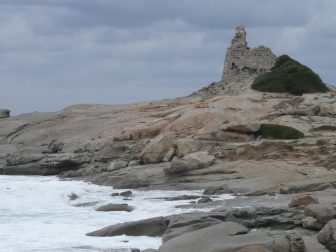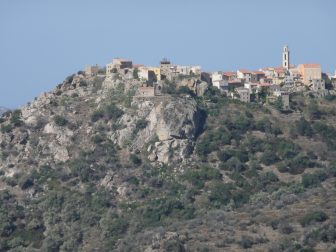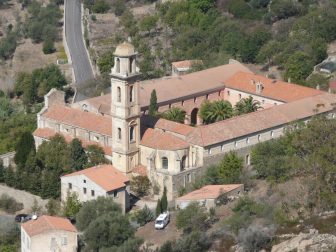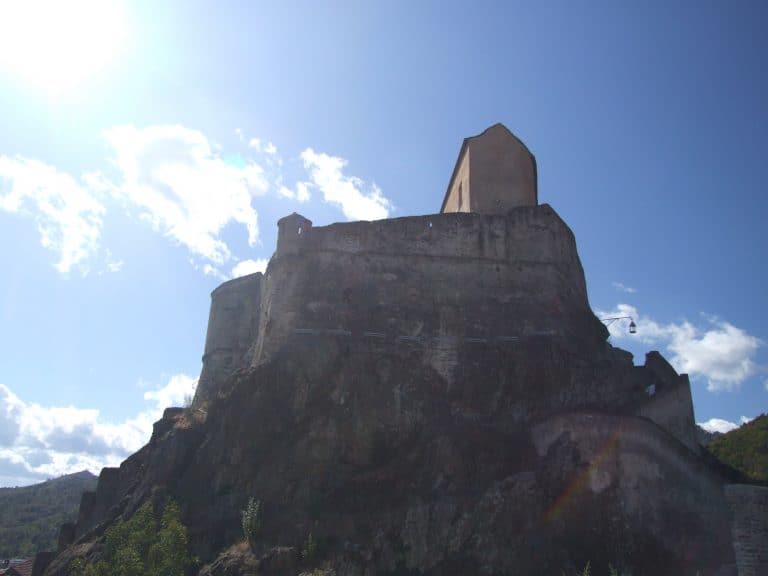
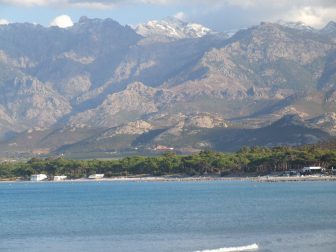
[Sept. 2007] While participating in a walking tour on the island of Corsica in France, I often moved on my own away from the group, and on this day as well, I participated in another bus tour going to a town called Corte in the centre of the island.
There were many elderly people in our walking tour, but this bus tour was full of elderly, too.
Is Corsica popular with the elderly?
From Calvi, where we were staying, the bus went along the sea for a while, and then went up to the inland mountainous areas.
In this kind of tours, the guide explains the history and other things, so finally I learned a little about what Corsica was like.
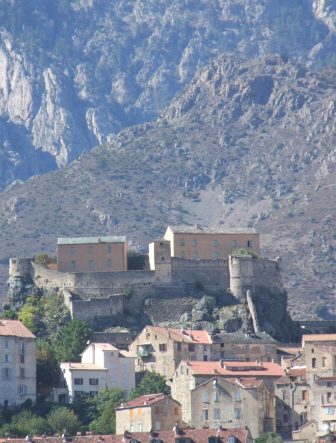
During the journey, I could see a number of small villages stuck to the rocky mountains from the bus window.
The houses in such places had small windows and were tall with quite a few floors.
According to the guide, the people around here had been poor and traditionally increased the number of floors in their homes with each generation.
Each floor was an independent residence, but a married woman couldn’t leave her house, even if her husband died early and it was like a prison.
We had a plenty of time at our destination, Corte.
Corte was the capital of the Corsican Republic, the era when Corsica was an independent nation from 1755 to 69.
According to the guide, the long-standing rule of Genoa was not too strict, but the famine in the middle of the 18th century made difficult for the islanders to pay the tax, and the independence movement became active.
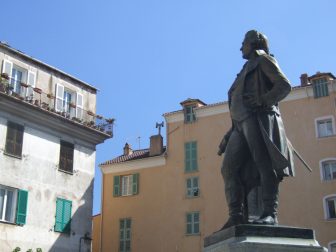
The driving force behind the independence movement was Pasquale Paoli, whose statue was in the town square.
Napoleon is famous all over the world when it comes to Corsica, but apparently Paoli is much more popular locally.
Paoli built a university in Corte and established the flag of Corsica.
On the flag there is a picture of a head of a Moorish man with the headband.
The flag of Sardinia, Italy, south of Corsica, looks similar with the four Moorish heads within a red cross.
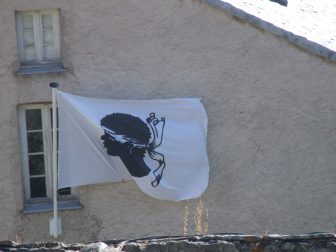
In Sardinia, it is a flag that shows that Genoa conquered the Moors, but in Corsica, this Paoli officially adopted the old motif for the national flag and coins.
So, although it is the Moorish head, with the headband, it has a feeling like a statue of a warrior of the independence movement.
As mentioned in the guidebook, Corte’s Citadel looked as if it grew from a rock.
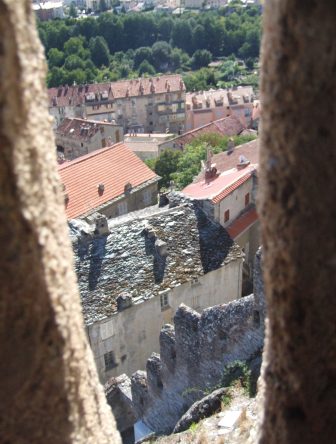
The view from below was good, and the view from above was also good, and it was a pretty scenic place.
The former military hospital in Citadel became the Corsica Museum, where there was an exhibition about the traditional life of Corsica.
At lunchtime, I went to a restaurant and had fried seafood with beer.
It was a place where there were not many people travelling alone, and because I am a foreigner, I felt that people were looking at me with curiosity, but I didn’t really care.
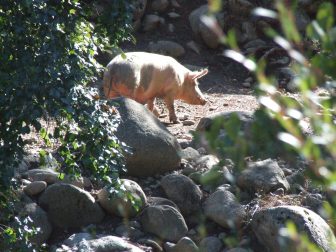
After this, the tour went to the valley called Vallee de la Restonica.
It was refreshing to see a beautiful river flowing through it, but other than that, there was not much to see.
I saw a wild pig (?) striding, though.


